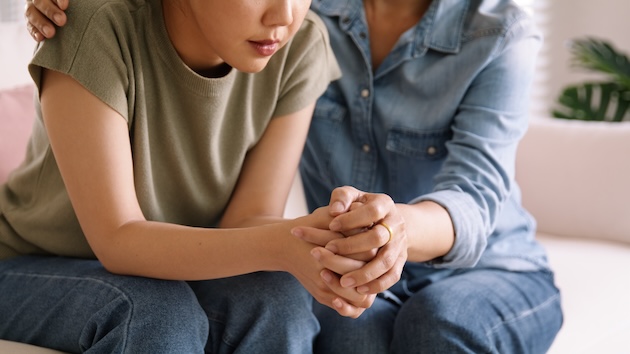Grief and Loss
Grief is the acute pain that accompanies loss. Grief reflects what we love and for this reason, it can feel overwhelming and all-encompassing. Any loss can cause grief. We often think about death when we hear the word grief. Still, losses can also include living losses like separations, absences, and departures that are very common with divorce, estrangement from a family member, and having a loved one who is in the military or incarcerated. The loss of connection such as when a person you are attached to becomes chronically ill, struggles with mental health issues or addiction. We must also consider the loss of pets and animals and the experience of moving homes, schools, or even teachers when a child moves from one grade to the next.
When a person experiences grief they usually report both emotional and physical symptoms. These symptoms and reactions should be normalized and validated. Say, “What you are feeling is normal considering what you have experienced.” There is no right or wrong way to grieve. Grief is individual and unpredictable. Even two children grieving the same loss might respond differently. Let children know it is alright to laugh, play, and have fun simultaneously as they are experiencing grief symptoms and reactions.
- Sadness and crying.
- Loss of appetite.
- Trouble sleeping.
- Headaches and stomachaches.
- Disinterest in activities or socializing or may want to be surrounded by people and with many activities.
- Fatigue.
- Difficulty finding the words to express feelings.
- Regression.
- Anger.
- Numbness.
- Non-linear healing (Feel alright one day or hour but not the next).
Grief and Trauma
Prolonged, persistent, and complicated grief symptoms and reactions might indicate the experience is traumatic for the child. Sadness following grief is undoubtedly normal but when the reaction turns into one that appears more like terror, that is a trauma response. Similarly, it is typical for grieving children to be mad but when that anger becomes aggressive or assaultive, that too is a trauma response. Another indicator of a trauma response is when a child expresses the death or loss is their fault. For example, “If I wasn’t misbehaving while my granny was home with me, she would not have had a heart attack and died.” A shift in identity is also something to watch. In grief, the identity of the child remains intact but when a child’s identity becomes shifted or distorted as a result of the loss, that is more of a trauma response. For example, “kids with incarcerated parents don’t go to college.”
Helping Someone through Grief
- Be patient and listen. Let the grieving person be seen and heard. If you don’t know what to say, that is alright, just be there and listen. Ask what you might do to help them feel even a tiny bit better.
- Be nurturing. Offer kindness and care. Sensory support is helpful. Your presence, a glass of water or a snack, a blanket or plush animal to snuggle with can be very comforting. Downtime might be more necessary while grieving.
- Offer consistency. Boundaries and expectations should be kept in place however, they may require some flexibility during grief. Try to implement a routine so the child feels a sense of predictability.
- Talk about the loss whether it is a person, place, or experience. Ask questions but don’t demand answers. Invite the child to share memories of who or what they are grieving if they wish to do so.
- Offer opportunities for expression. Children will experience relief when they can play, listen to or dance to music, draw, paint, or create other forms of art with simple supplies like paper plates, chenille stems, beads, fabric squares and buttons.


